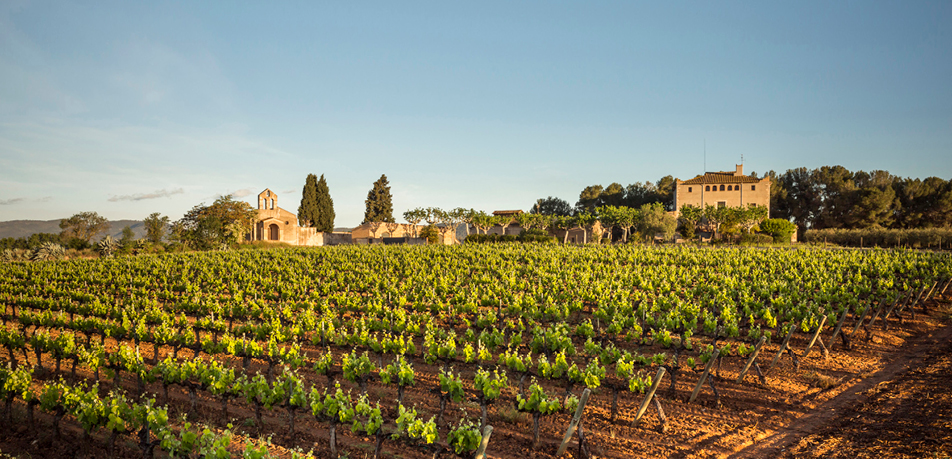HISTORY WRITTEN IN WINE

A new archaeological find reveals the history beneath our feet and proves that winegrowing has enjoyed a continuous existence in Penedès for 2500 years.
A new piece has fallen into place, completing the historical timeline of wine in the place we call home. This small piece of land bears traces pointing to the presence of an Iberian settlement, and later, a Roman villa.
The Torres family acquired the 17th-century castle, which is listed as a Cultural Asset of National Interest (BCIN), in 2016 to help preserve the region's vinicultural heritage while establishing a vineyard to grow Moneu, a revived ancestral variety.
Silos found below one of the rooms in the house provide evidence of an Iberian settlement. According to archaeologist Xavier Esteve, “One is like a Russian doll, with up to three silos, one inside the other: a silo from the modern period cut around another silo, dug at the same spot two thousand years earlier, during the Iberian period, which in turn cuts into the side of a third silo—also Iberian, but even older.” He goes on to say: “Prior to the current building, which is from the 17th century, there was a medieval country house here and, before that, a castle. Now we can also confirm that this was the site of a Roman villa and an Iberian settlement.”
[[{"fid":"20685","view_mode":"default","fields":{"format":"default","alignment":"","field_file_image_alt_text[und][0][value]":false,"field_file_image_title_text[und][0][value]":false},"type":"media","field_deltas":{"1":{"format":"default","alignment":"","field_file_image_alt_text[und][0][value]":false,"field_file_image_title_text[und][0][value]":false}},"link_text":null,"attributes":{"height":991,"width":661,"style":"height: 750px; width: 500px;","class":"media-element file-default","data-delta":"1"}}]]Miguel Torres Maczassek with archaeologist Xavier Esteve at La Bleda castle.(Santa Margarida i els Monjos, Penedès).
Archaeological sites (for example, Font de la Canya) offer growing evidence that deconstructs the area's history, showing how the land itself, social uses and customs, and wine-related practices have shaped the landscape and population of Penedès. In the process, the region—our home—has developed a deep-rooted connection to wine, which has articulated the idiosyncrasies and the economic, social, and cultural development of the place and its people.
La Bleda castle sits along the ancient Roman road known as Via Augusta, which is taking on a new life to show us the way forward, and the road we've traveled so far. Paths like arteries, transporting grapes and culture; where evolution meets respect for a past as rich in experiences as it is in material heritage.
Now this legacy joins the ancestral patrimony that the Torres family is restoring and opening up to the world: the fortified Milmanda farm and the Cistercian wall of Grans Muralles, Mas La Plana, or the ancient Benedictine dining hall at the new Purgatori winery all reveal a vinicultural past that has shaped us and which we carry into the future.
[[{"fid":"20686","view_mode":"default","fields":{"format":"default","alignment":"","field_file_image_alt_text[und][0][value]":false,"field_file_image_title_text[und][0][value]":false},"type":"media","field_deltas":{"2":{"format":"default","alignment":"","field_file_image_alt_text[und][0][value]":false,"field_file_image_title_text[und][0][value]":false}},"link_text":null,"attributes":{"height":522,"width":931,"style":"height: 280px; width: 500px;","class":"media-element file-default","data-delta":"2"}}]]Vineyard at La Bleda castle, a Familia Torres property, primarily dedicated to Moneu, a revived ancestral variety.
After all, who we were in the past informs who we are today, and what we want for our tomorrow. A vibrant, healthy, and well cared for region, rich in heritage and culture, with an identity that can be found in every vine, every river and river bank, every farmhouse, in the flatlands and hills. Today, as yesterday. As always.
